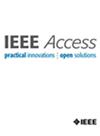Phase Code Integration Using Interpulse Techniques for Enhanced Radar Performance
IF 3.4
3区 计算机科学
Q2 COMPUTER SCIENCE, INFORMATION SYSTEMS
引用次数: 0
Abstract
Phase coding plays an important role in radar systems, affecting signal modulation, target detection, and interference rejection. This study assesses various phase codes, including Gold, Kasami, Barker, Frank, and Chaotic codes, by analyzing performance metrics like cross-correlation and peak-to-sidelobe ratio (PSLR). The study highlights certain limitations, suggesting the need for new waveform solutions. It integrates component-based and Kronecker product-based interpulse coding to combine different codes and improve overall system performance. By merging phase codes effectively, interpulse coding leverages the strengths of individual codes to produce a composite waveform with enhanced autocorrelation and cross-correlation properties, improving radar performance. An optimization problem is formulated using a weighted performance metric to identify the best waveform, considering factors such as cross-correlation and PSLR. The approach, utilizing simple Kronecker and element-wise multiplication techniques, offers significant benefits with minimal complexity. The Barker-Gold interpulse code stands out as highly effective for spread spectrum-based applications due to its favorable correlation properties.求助全文
约1分钟内获得全文
求助全文
来源期刊

IEEE Access
COMPUTER SCIENCE, INFORMATION SYSTEMSENGIN-ENGINEERING, ELECTRICAL & ELECTRONIC
CiteScore
9.80
自引率
7.70%
发文量
6673
审稿时长
6 weeks
期刊介绍:
IEEE Access® is a multidisciplinary, open access (OA), applications-oriented, all-electronic archival journal that continuously presents the results of original research or development across all of IEEE''s fields of interest.
IEEE Access will publish articles that are of high interest to readers, original, technically correct, and clearly presented. Supported by author publication charges (APC), its hallmarks are a rapid peer review and publication process with open access to all readers. Unlike IEEE''s traditional Transactions or Journals, reviews are "binary", in that reviewers will either Accept or Reject an article in the form it is submitted in order to achieve rapid turnaround. Especially encouraged are submissions on:
Multidisciplinary topics, or applications-oriented articles and negative results that do not fit within the scope of IEEE''s traditional journals.
Practical articles discussing new experiments or measurement techniques, interesting solutions to engineering.
Development of new or improved fabrication or manufacturing techniques.
Reviews or survey articles of new or evolving fields oriented to assist others in understanding the new area.
 求助内容:
求助内容: 应助结果提醒方式:
应助结果提醒方式:


